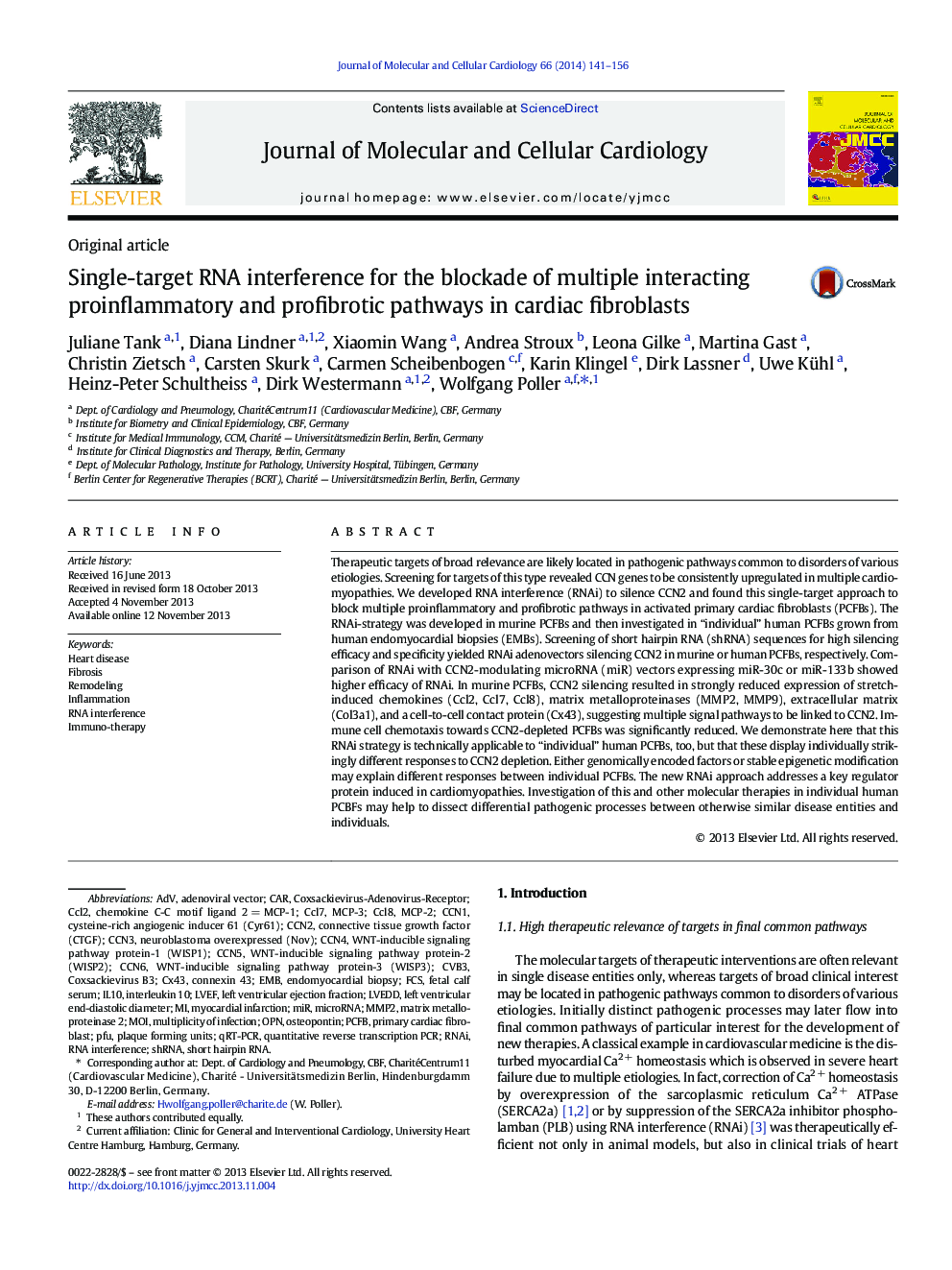| کد مقاله | کد نشریه | سال انتشار | مقاله انگلیسی | نسخه تمام متن |
|---|---|---|---|---|
| 2190560 | 1550439 | 2014 | 16 صفحه PDF | دانلود رایگان |

• Screening for therapeutic targets reveals CCNx genes in multiple cardiomyopathies.
• RNA interference against CCN2 blocks proinflammatory pathways in cardiofibroblasts.
• Immune cell chemotaxis to CCN2-depleted cardiofibroblasts is significantly reduced.
• The RNA interference strategy is applicable to “individual” human cardiofibroblasts.
• CCN2 silencing resulted in individually distinct expression changes in human cells.
Therapeutic targets of broad relevance are likely located in pathogenic pathways common to disorders of various etiologies. Screening for targets of this type revealed CCN genes to be consistently upregulated in multiple cardiomyopathies. We developed RNA interference (RNAi) to silence CCN2 and found this single-target approach to block multiple proinflammatory and profibrotic pathways in activated primary cardiac fibroblasts (PCFBs). The RNAi-strategy was developed in murine PCFBs and then investigated in “individual” human PCFBs grown from human endomyocardial biopsies (EMBs). Screening of short hairpin RNA (shRNA) sequences for high silencing efficacy and specificity yielded RNAi adenovectors silencing CCN2 in murine or human PCFBs, respectively. Comparison of RNAi with CCN2-modulating microRNA (miR) vectors expressing miR-30c or miR-133b showed higher efficacy of RNAi. In murine PCFBs, CCN2 silencing resulted in strongly reduced expression of stretch-induced chemokines (Ccl2, Ccl7, Ccl8), matrix metalloproteinases (MMP2, MMP9), extracellular matrix (Col3a1), and a cell-to-cell contact protein (Cx43), suggesting multiple signal pathways to be linked to CCN2. Immune cell chemotaxis towards CCN2-depleted PCFBs was significantly reduced. We demonstrate here that this RNAi strategy is technically applicable to “individual” human PCFBs, too, but that these display individually strikingly different responses to CCN2 depletion. Either genomically encoded factors or stable epigenetic modification may explain different responses between individual PCFBs. The new RNAi approach addresses a key regulator protein induced in cardiomyopathies. Investigation of this and other molecular therapies in individual human PCBFs may help to dissect differential pathogenic processes between otherwise similar disease entities and individuals.
Journal: Journal of Molecular and Cellular Cardiology - Volume 66, January 2014, Pages 141–156